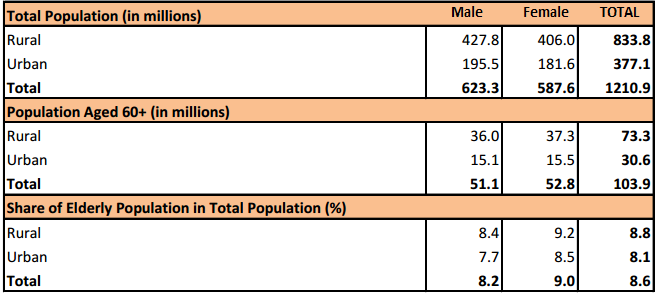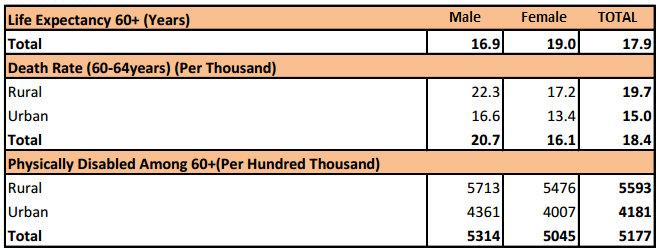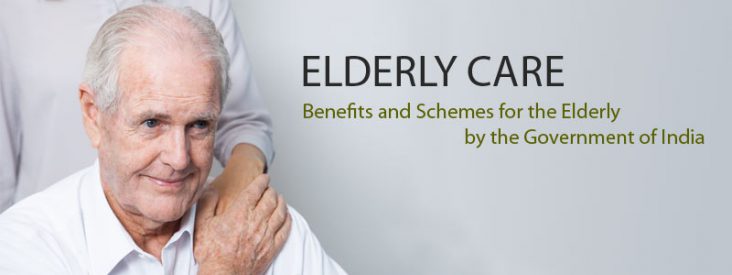Elderly Care
Today India should focus on the health, housing, and dignity of the elderly. India has the second-highest population of elderly people in the world. It is expected to rise up to 12% of the total population by 2020 and by 2050, the number is expected to reach 300 million. Therefore, India could be considered as an ‘aging population’. Now, it’s necessary to focus on elderly care.
Taking Care of Elderly
When compared with the past, diversity in the lifestyle and work culture could be easily seen. The nuclear family trend has risen significantly in the last decade. With the decrease in the concept of joint families, the seniors prefer to remain active much longer. The younger generation is moving away for good jobs and living a hectic life. The elders generally prefer to live among their community and lifelong friends. This has brought a gradual decline in the traditional family support system in India.
[AdSense-A]
Statistics of the Elderly Population in India
Global Age Watch Index 2015 has ranked India at 71st out of 96 countries on elderly care (more than 60 years). India also has the 2nd highest population of elderly people in the world. Listed below are the statistics of the elderly people in India, according to Population Census 2011 and SRS Report 2013.
(Source: http://mospi.nic.in/sites/default/files/publication_reports/ElderlyinIndia_2016.pdf)
- Population

- Economy

- Health

- Education

According to the above data, we would have to provide care for the elderly on many levels, especially in inaccessible locations. The government has taken certain steps keeping the elderly care in mind. They passed a law in 2007, i.e. Maintenance and Welfare of Parents and Senior Citizens Act. This Act obligates relatives or children to provide maintenance for their parents and senior citizens. It also provides support and care for elderly by setting them up in State Government-funded old age homes.
Benefits and Schemes for the Elderly by the Government of India
Over the past few years, Indian Government has launched various schemes and policies for the elderly population. At present, the scheme which provides cash transfers as elderly care in India is Indira Gandhi National Old Age Pension Scheme. (Source: http://nsap.nic.in/nsap/NSAP-%20About%20us.pdf)
This National Assistance Program includes 5 sub-schemes:
- Indira Gandhi National Old Age Pension Scheme (IGNOAPS) – It covers Indian elderly who are living below the poverty line with age of 60 years and above.
| Age (in Years) | Pension Amount (in INR) |
| 60 – 79 | 300 |
| Above 80 | 750 |
- Indira Gandhi National Widow Pension Scheme (IGNWPS) – It is eligible for widows who are living below poverty line and whose age is 40 years and above.
| Age (in Years) | Pension Amount (in INR) |
| 40 – 79 | 300 |
| Above 80 | 500 |
- Indira Gandhi National Disability Pension Scheme (IGNDPS) – This scheme is eligible for individuals who are more than 80% disable with minimum age of 18 years. To access this scheme they should fall under the poverty
| Age (in Years) | Pension Amount (in INR) |
| 18 – 79 | 300 |
| Above 80 | 500 |
- National Family Benefit Scheme (NFBS) – This scheme benefits those bereaved families who have lost the sole breadwinner in the family in an untimely death. An assistance of INR 20,000 is awarded to the family, provided the breadwinner is between 18-60 years.
- Annapurna Scheme – This scheme provides elderly care in the form of food security to those senior citizens who remained uncovered under the IGNOAPS. The beneficiaries’ receive 10 kg of free rice.
Other NGO’s that supports elderly care are HelpAge India, Agewell India, and Dignity Foundation. To sustain their care level they rely on charitable funding. The Varishtha Pension Bima Yojana has been passed in 2017. It guarantees 8% rate of returns for 10 years to all the senior citizens.
We at the community level should also increase the avenues and care for elderly. Elderly people should be given ample opportunity to have community interaction, where they can share their concerns and contribute socially so that they can live their lives with dignity.
Read here about our project for elderly care.


